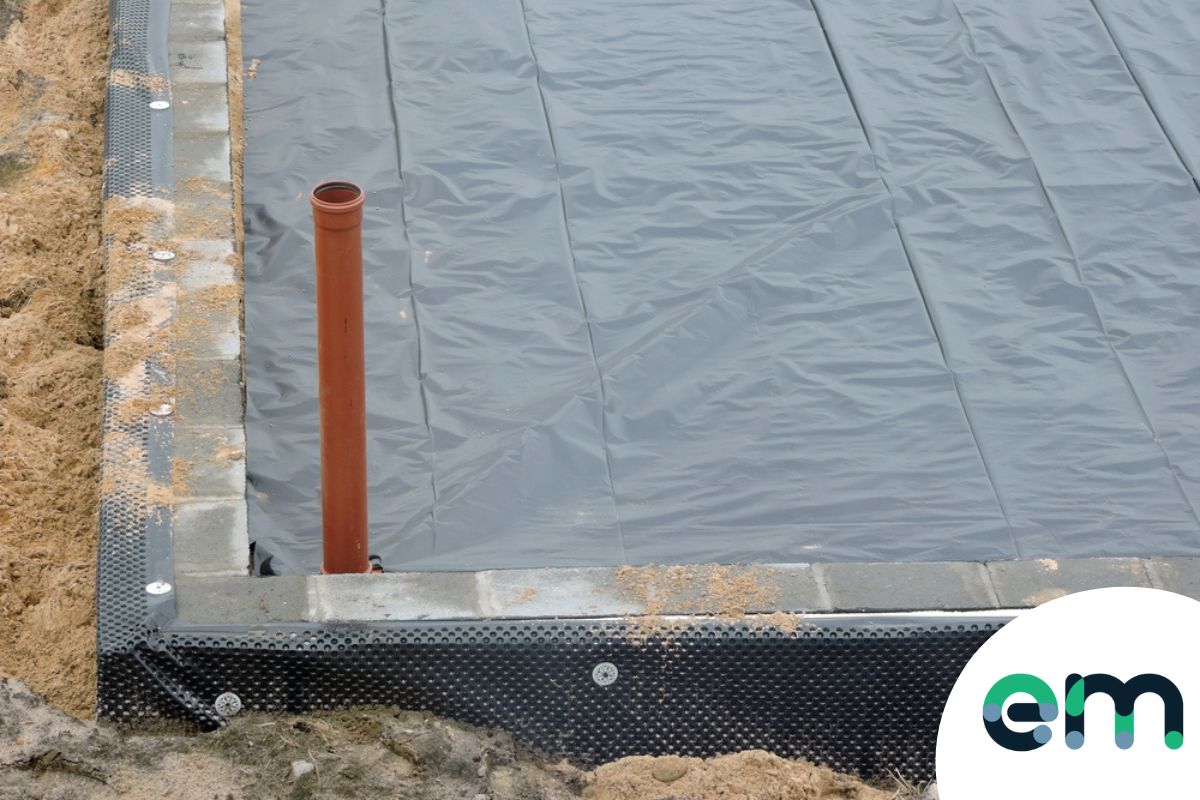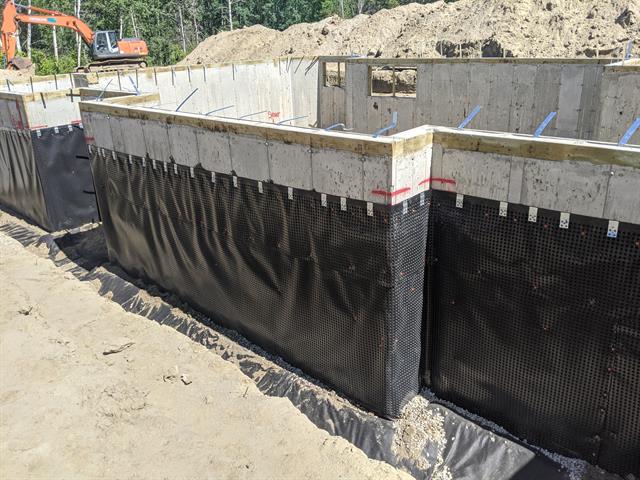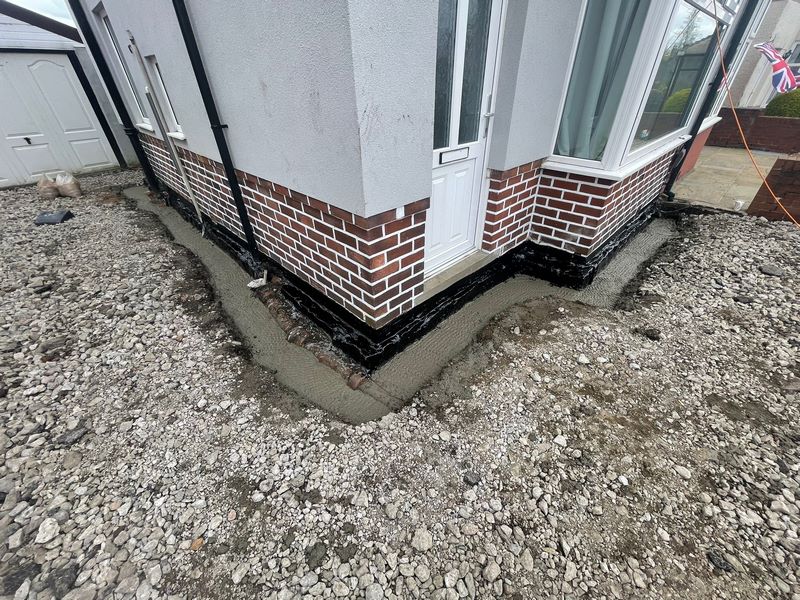Exploring the Different Techniques and Solutions for Effective Damp Proofing
Moisture in buildings positions substantial difficulties to both architectural honesty and indoor air quality. Various strategies and options have actually emerged to combat this pervasive concern. From conventional damp-proof membranes to ingenious chemical treatments, each approach uses distinct advantages. Recognizing these choices is essential for reliable moisture control. Selecting the best remedy depends on certain structure conditions and needs, triggering additional expedition into the most reliable wet proofing methods available.
Recognizing the Reasons For Dampness
Although dampness can emerge from numerous resources, comprehending these causes is essential for reliable remediation. Frequently, dampness originates from 3 key resources: increasing damp, penetrating wet, and condensation. Increasing wet happens when groundwater takes a trip up-wards with permeable materials, such as block or stone, frequently because of a lack of a reliable barrier (damp removal newcastle). Permeating wet is generally triggered by exterior aspects, including roofing system leakages, malfunctioning rain gutters, or damaged wall surfaces, allowing water to infiltrate a home. Condensation, on the various other hand, results from excess moisture in the air, frequently aggravated by inadequate air flow and temperature distinctions, causing water beads forming on surfaces. Identifying these underlying concerns is vital, as each kind of moisture needs a customized approach for remediation. Appropriate assessment assists in establishing one of the most effective services, inevitably securing the architectural integrity of a structure and improving indoor air quality
Traditional Damp-Proof Membrane Layers

Chemical Damp-Proofing Solutions
Chemical damp-proofing options offer an ingenious method to stop dampness intrusion in buildings. These methods normally include the application of liquid chemicals that penetrate stonework and develop an obstacle against increasing wet. Frequently used chemicals include silanes, siloxanes, and other water-repellent representatives that react with surface area materials to produce a hydrophobic layer.The application procedure typically requires boring openings right into the wall surfaces, injecting the chemical remedy, and permitting it to treat. This method is particularly helpful for older structures where conventional damp-proof membranes may be not practical. Chemical damp-proofing can be less turbulent and more economical than considerable improvement projects.While reliable, these remedies depend on proper application and ecological conditions for peak performance. mould removal newcastle. Regular maintenance and surveillance are necessary to guarantee the long life of the damp-proofing treatment. Overall, chemical damp-proofing represents a flexible alternative for guarding buildings against moisture-related damages
Tooth Cavity Wall Building Strategies
Cavity wall surface construction methods offer many benefits, particularly in wetness control and power performance. By incorporating an air space between two layers of masonry, these wall surfaces properly alleviate water access while improving insulation. This combination not just protects structures from moisture yet additionally adds to decreased energy intake.
Advantages of Cavity Wall Surfaces
When thinking about efficient moist proofing approaches, the advantages of cavity walls stand apart prominently. Tooth cavity wall surfaces contain two separate layers, producing an air gap that successfully minimizes dampness infiltration. This layout lessens the threat of wetness, as the external wall surface acts as a barrier against rain and water ingress. Furthermore, dental caries wall surfaces boost thermal insulation, which adds to power performance by lowering warmth loss. They also give audio insulation, helping to create a quieter indoor setting. Moreover, the air gap allows for ventilation, which aids in moisture control and reduces the likelihood of mold development. These advantages not only improve the total convenience of a building but also add to its long life and architectural stability.
Moisture Control Approaches
Reliable moisture control techniques are important in dental caries wall surface building and construction to assure long-lasting protection against moisture. One key method includes the unification of weep holes, which promote water drainage from the tooth cavity, protecting against accumulation. Furthermore, making use of breathable membrane layers can help handle moisture levels while permitting trapped vapor to get away. Correct placement of insulation is additionally critical, as it ought to not block water drainage courses. Moreover, making sure that the external fallen leaves of the cavity wall are built with waterproof products boosts overall longevity. Normal upkeep checks are important to determine any kind of clogs or damages early, guarding the framework's honesty. Ultimately, a combination of these techniques forms a durable protection versus wetness invasion in tooth cavity walls.
Insulation and Energy Effectiveness
Insulation plays a crucial duty in boosting power effectiveness within dental caries wall surface building and construction. By including protecting products, these wall surfaces develop a thermal obstacle that decreases warm loss and reduces energy intake. Effective insulation not only helps keep a secure interior temperature level however likewise alleviates the risk of wetness, as it protects against condensation within the wall cavity. Numerous strategies, such as the use of rigid foam boards or mineral woollen, can be utilized to attain suitable insulation performance. Furthermore, correct installment is necessary to guarantee that gaps and voids are minimized, which can or else jeopardize energy performance. Eventually, a well-insulated cavity wall surface adds website significantly to overall sustainability and decreases heating and cooling expenses for home owners.
External Damp Proofing Approaches
External moist proofing techniques are necessary for safeguarding structures from wetness seepage. 2 effective techniques consist of the application of waterproof membrane layers and the setup of French drains. These solutions assist reduce water build-up and preserve the honesty of buildings.
Waterproof Membrane Layer Application
While various techniques exist for avoiding dampness ingress, the application of water resistant membrane layers remains an extremely reliable external damp proofing method. These membrane layers are usually made from products such as polyethylene, rubber, or customized asphalt, supplying a durable barrier against water infiltration. The installation process entails applying the membrane layer to the outside surfaces of foundations or wall surfaces, ensuring full protection to prevent leakages. Proper adhesion and sealing at joints are important to maximizing effectiveness. Waterproof membranes can be applied in different types, consisting of fluid coverings and sheet membranes, permitting adaptability based on the particular demands of the structure. This method not only protects structures from wetness but also enhances their durability and architectural stability.
French Drainpipe Setup
One efficient approach for taking care of groundwater and preventing moisture build-up around a building's foundation is the installation of a French drainpipe. This water drainage system is composed of a trench full of crushed rock and a perforated pipe that reroutes surface area water away from the structure. Appropriate setup calls for cautious planning, ensuring that the drainpipe inclines far from the structure to promote perfect water flow. Additionally, the area of the drainpipe is important; it ought to be positioned in locations susceptible to pooling or excess wetness. Regular maintenance, including clearing up debris from the gravel and guaranteeing the pipeline continues to be unhampered, is necessary for long-lasting performance. Eventually, a well-installed French drain can greatly minimize the danger of water-related concerns in foundations and cellars.
Inside Waterproofing Approaches
Inside waterproofing methods are crucial for securing a building's interior from wetness infiltration and possible water damages. These approaches typically include the application of specific products and methods created to create a dampness obstacle within the framework. One usual strategy is making use of water resistant finishes or sealers on wall surfaces and floorings, which protect against moisture from penetrating surfaces.Additionally, setting up interior water drainage systems, such as sump pumps, can efficiently take care of water accumulation in cellars and crawl areas. An additional approach includes making use of vapor obstacles, which are set up to hinder wetness motion from the ground into living spaces.Moreover, resolving any type of splits or voids in wall surfaces or structures with appropriate sealants ensures a thorough defense against water invasion. By executing these indoor waterproofing approaches, building proprietors can greatly decrease the risk of mold growth, structural damages, and other moisture-related issues. Proper execution of these techniques is vital for long-lasting security and structure stability.
Normal Upkeep and Assessment Practices
Normal maintenance and evaluation practices are important for ensuring the long-lasting performance of wet proofing solutions in any building. Routine checks make it possible for residential property proprietors to determine early indications of wetness intrusion, such as peeling off paint, mold growth, and moldy smells. These indications can signal underlying problems that need immediate attention.Inspections ought to be conducted at least yearly, focusing on susceptible locations like cellars, creep spaces, and exterior wall surfaces. Throughout these analyses, residential or commercial property owners should examine sealants, water drainage systems, and air flow to validate they function correctly.Additionally, keeping rain gutters and downspouts is necessary, as blocked systems can cause water accumulation near the structure. Applying a normal maintenance timetable, along with prompt repair services, can significantly extend the life-span of moist proofing actions and secure the structural honesty of the building. Aggressive procedures ultimately add to the overall wellness and security of the living setting.
Often Asked Inquiries
How Lengthy Does Damp Proofing Commonly Last?
The period of moist proofing efficiency varies, usually lasting in between 20 to half a century. Factors such as application high quality, ecological conditions, and maintenance practices considerably affect the long life of the damp proofing therapy.

Can I Damp Evidence My Home Myself?
The individual contemplated the usefulness of DIY damp proofing. With correct research study and the right materials, it is possible. Nonetheless, they likewise identified the significance of specialist assistance to assure lasting performance and protect against future concerns.
What Are the Signs of Inefficient Damp Proofing?
Indicators of ineffective moist proofing consist of persistent moldy smells, noticeable mold growth, peeling off paint, damp patches on walls, and timber degeneration - damp proofing newcastle. House owners need to address these problems without delay to avoid additional damages and health worries
Does Damp Proofing Affect Indoor Air Top Quality?

How Much Does Specialist Damp Proofing Cost?
Expert wet proofing costs vary substantially, generally varying from $1,000 to $5,000 relying on the residential property's size, the degree of the wet issue, and chosen techniques. Each scenario requires a tailored evaluation for exact rates. Typically, wetness stems from three main sources: climbing moist, penetrating moist, and condensation. When considering reliable moist proofing methods, the benefits of tooth cavity wall surfaces stand out prominently. Exterior moist proofing approaches are necessary for safeguarding frameworks from moisture seepage. While various approaches exist for stopping moisture access, the application of water resistant membranes stays a highly efficient exterior damp proofing strategy. Indications of inadequate damp proofing consist of persistent mildewy odors, visible mold and mildew growth, peeling off paint, damp spots on walls, and wood degeneration.